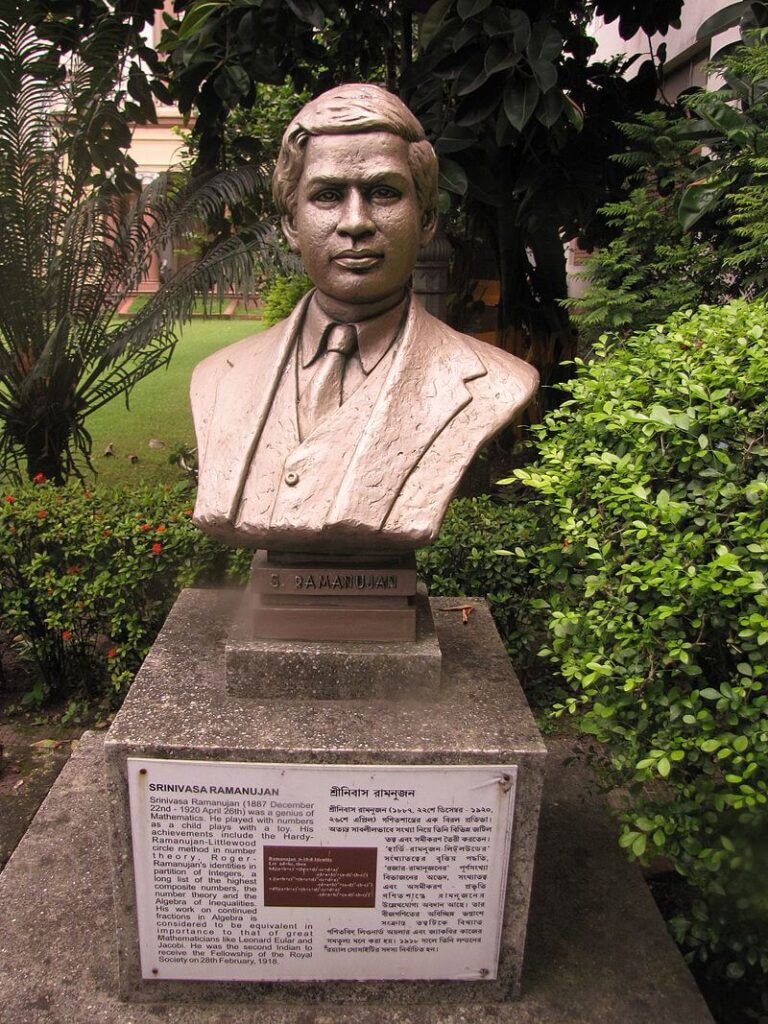
Every year December 22 the birth anniversary of Srinivasa Ramanujan is celebrated as National Mathematics Day in India. The main objective behind the National Mathematics Day celebration is to make people aware of the importance of mathematics and its role in the growth of humanity.
This was the day when Srinivasa Ramanujan (22 Dec 1887- 26 Apr 1920) the Indian mathematical genius who transformed the field of mathematics was born in an extremely poor Iyengar Brahmin family in Erode, a small village about 400 km away from Madras (now Chennai) in Tamil Nadu in 1887. His father K. Srinivasa Iyengar worked as an accounts clerk for a cloth merchant, while his mother Komalatammal was a singer at the local temple.
At a very young age, Ramanujan developed a liking for mathematics and developed his own theorems without anyone’s help. He mastered trigonometry at the age of 12 with the help of books borrowed from friends in school. Ramanujan began serious self-study of mathematics and enrolled in Madras’ Pachaiyappa College at the age of 14.
But with little other guidance, Ramanujan’s mathematical knowledge was largely based on a book on pure mathematics by George S. Carr which contained over 4000 mathematical theorems without much step-by-step work. Ramanujan picked up from it that this was how mathematical problems and thus learned to do most of his work on a slate with chalk, transferring a minimal amount of his work and results to paper.

However he had a phenomenal memory for mathematical formulas and amazed his classmates by his ability to recite the values of irrational numbers like π, e, and √2 down to several decimal places.
In 1903 Ramanujan secured a scholarship for further studies at the Government Arts College, University of Madras but lost the opportunity because of his dislike for non-mathematical subjects in which he failed. He passed mathematics but failed all other subjects and therefore failed to clear the exam to study at the University of Madras.
Not to be led down Ramanujan continued to pursue his interest in mathematics without any help and went on to publish his first paper in the Journal of the Indian Mathematical Society in 1911. Despite his lack of a university education, he was becoming well-known as a mathematical genius.
To make ends meet while pursuing his love for Maths, Ramanujan started working as a clerk in the Madras Port Trust where some of his colleagues introduced him to Professor GH Hardy of Trinity College, Cambridge University. Ramanujan met Hardy in 1913, and at his behest traveled to England in 1914, where Hardy tutored him and collaborated with him on several projects.
Also Read: I broke Shakuntala Devi’s record. Someone else will break mine’ – Neelakantha Bhanu
It is because of their joint efforts that the number 1729 — the smallest number expressible as the sum of two cubes in two different ways– is called the Ramanujan-Hardy number.
Ramanujan went on to publish several papers with Hardy’s help and received his Bachelor of Science (BSc) degree in 1916.
Ramanujan was elected to the London Mathematical Society in 1917. Next year, he was elected to the prestigious Royal Society for his research on Elliptic Functions and the theory of numbers. He became the first Indian to be elected a Fellow of Trinity College.
He also made notable contributions like the hypergeometric series, the Riemann series, the elliptic integrals, the theory of divergent series, and the functional equations of the zeta function. He is said to have discovered his own theorems and independently compiled 3,900 results.
Ramanujan returned to India in 1919 and breathed his last a year later, on April 26.
Ramanujan died at the age of 32 in 1920 due to deteriorating health. He left behind three notebooks and a sheaf of papers containing solutions to many complex mathematical equations and problems that continued to puzzle mathematicians even after his death.
In his extremely short lifespan, Ramanujan left an impact in the field of infinite series, continued fractions, number theory, and mathematical analysis.
In 2015 a film titled ‘The Man Who Knew Infinity” was released based on Srinivasa Ramanujan’s early childhood, life in Britain, and journey to becoming a great mathematician.
Ramanujan will be remembered for ages to come because of his substantial contributions to the analytical theory of numbers, elliptic functions, continued fractions, and infinite series.

